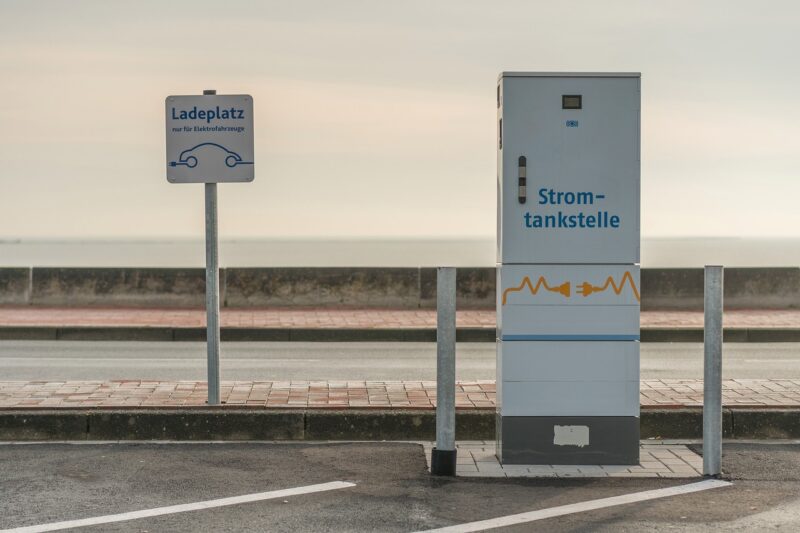The Push for EV Infrastructure in Rural Areas: Challenges and Solutions
November 12, 2024

As electric vehicles (EVs) ccontinue to gain popularity, discussions about the necessary infrastructure to support them have been primarily focused on urban areas. However, rural areas face unique challenges and opportunities when it comes to establishing EV charging infrastructure. This article delves into the challenges rural regions encounter in adopting electric vehicles and the innovative solutions being implemented or proposed to ensure that the push for EV infrastructure reaches all corners of the country.
1. The Growing Importance of EVs
The transition to electric vehicles is essential for various reasons, including reducing greenhouse gas emissions, decreasing reliance on fossil fuels, and promoting cleaner air and healthier communities. According to a report from the International Energy Agency, the number of electric cars on the road is set to increase dramatically in the coming years. In order to support this growth, adequate charging infrastructure is essential, including in rural areas where charging stations may be sparse or non-existent.
For residents in rural communities, the adoption of EVs can provide unique benefits, such as lower fuel costs, reduced maintenance expenses, and energy independence. However, without reliable charging infrastructure, the transition to cleaner transportation becomes problematic.
2. Key Challenges in Rural EV Infrastructure
While urban areas are often seen as the focus of EV infrastructure development, there are significant challenges faced by rural communities that hinder the growth of electric vehicle usage. Some of these challenges include:
- Limited Charging Availability: Unlike cities, which may have a growing number of public and private charging stations, rural areas are often underserved, making it difficult for residents to charge their vehicles conveniently.
- Long Distances Between Charging Stations: In rural regions, residents may need to travel long distances to access the nearest charging station, which can be economically and logistically unfeasible, especially for emergency or long-distance travel.
- Limited Funding and Resources: Rural areas typically have fewer resources and funding opportunities for infrastructure improvements, making it difficult to install new EV charging stations or maintain existing ones.
- Resistance to Change: Many rural residents may be hesitant to switch to electric vehicles due to a lack of understanding, perceived inconvenience, or skepticism about the reliability and performance of EVs compared to traditional vehicles.
These challenges can slow the adoption of electric vehicles in rural areas, limiting the benefits they can provide to communities seeking cleaner transportation options.
3. Innovative Solutions to Enhance Rural EV Infrastructure
Despite the challenges, many organizations and communities are proactive in developing innovative solutions that improve access to EV charging infrastructure in rural areas.
3.1 Community-Based Charging Stations
One effective approach is to create community-based charging stations. Local governments, businesses, and community organizations can work together to fund and install charging stations in strategic locations, such as grocery stores, schools, or community centers. By prioritizing high-traffic areas, these stations can better serve the public and encourage EV adoption.
3.2 Incentives for EV Adoption
State and local governments can offer incentives to encourage residents to purchase electric vehicles and install charging stations. These incentives may include tax credits, rebates, and grants to reduce the initial financial burden. Additionally, educational programs can help residents understand the benefits of EVs and how to navigate potential barriers.
3.3 Partnerships with Private Companies
Public-private partnerships can enhance EV infrastructure development in rural areas. For example, electric utility companies can work with local businesses to install charging stations, ensuring that electricity is available and affordable. These collaborations can lead to joint marketing efforts that raise awareness of available charging stations while promoting electric vehicle adoption.
3.4 Utilizing Existing Infrastructure
Another cost-effective strategy is to retrofit existing infrastructure, such as gas stations and convenience stores, to include EV charging stations. By leveraging existing locations that the public is already familiar with, rural areas can quickly expand their charging network without the need to build entirely new facilities.
4. The Role of Technology in EV Infrastructure
Advancements in technology can also play a significant role in establishing EV infrastructure in rural communities. Here are a few examples:
- Mobile Apps and Navigation Tools: Apps that provide real-time information on EV charging station locations, availability, and pricing can help rural EV drivers plan their trips more effectively and reduce range anxiety.
- Smart Charging Solutions: Implementing smart charging technologies that enable users to reserve charging time, monitor their electricity consumption, and manage solar energy generation can enhance the user experience in rural areas.
- Data-Driven Decisions: Collecting and analyzing data on charging station usage patterns can help providers make informed decisions about where to install new stations and how to optimize existing infrastructure.
Technology not only streamlines the charging process for users but also optimizes the efficiency and effectiveness of rural EV charging networks.
5. Conclusion
Electric vehicles offer rural communities significant economic, environmental, and public health benefits. However, to ensure that these benefits are fully realized, it is essential to address the unique challenges rural areas face in establishing EV infrastructure. Through community involvement, innovative partnerships, and advancements in technology, rural regions can overcome barriers and promote wider EV adoption.
Working together, residents, local governments, businesses, and organizations can lay down the groundwork needed to create an accessible and robust EV infrastructure, ensuring that electric vehicles are a viable option for everyone, regardless of where they live. The push for EV infrastructure is vital not only for urban areas but also for the prosperity and sustainability of rural communities across the nation.






